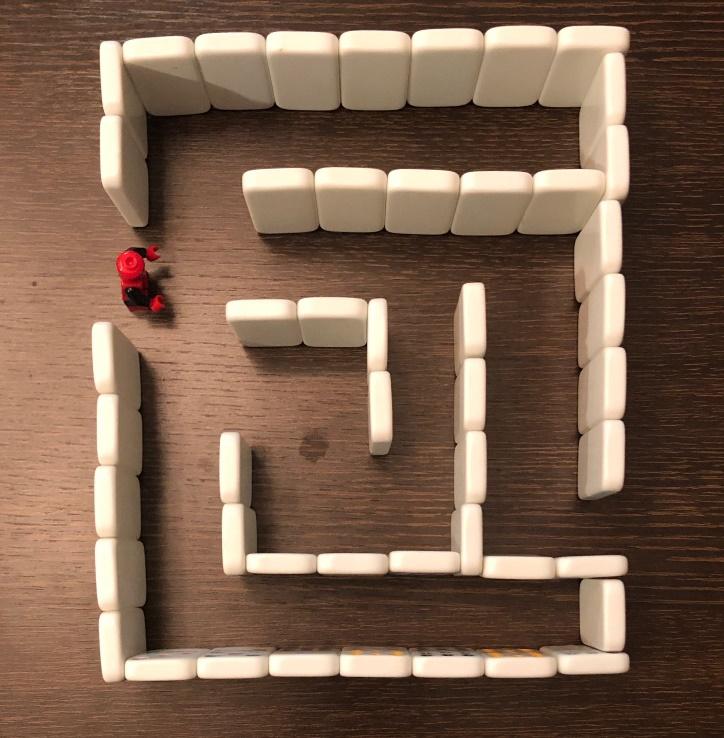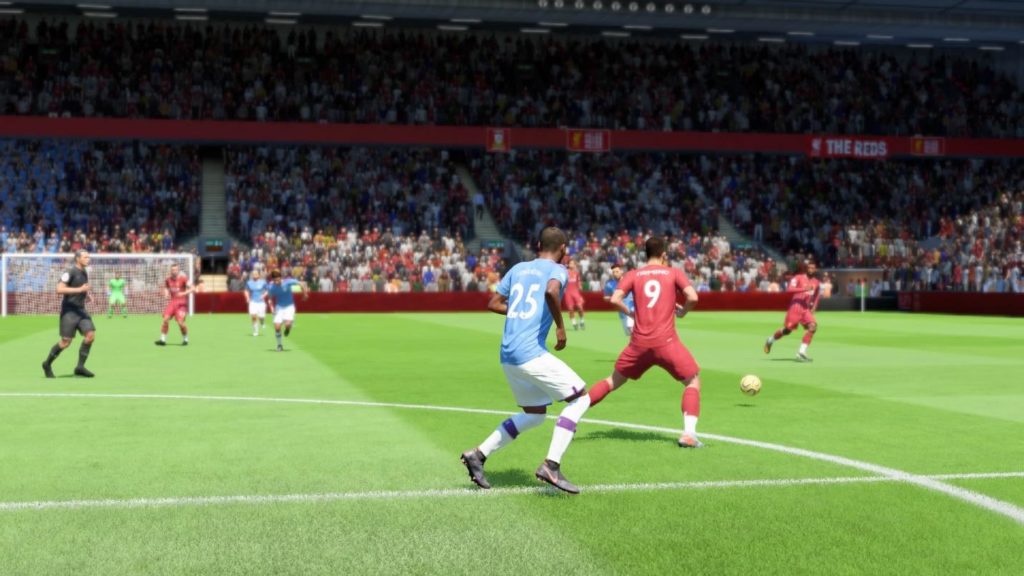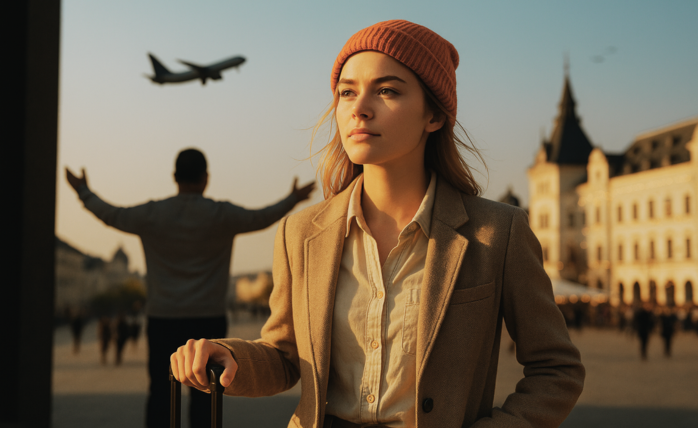Life
Here’s How Seeing the Bigger Picture Helps With Decision Making

Seeing the big picture helps in making the best decisions to keep you on track towards your vision. Around Thanksgiving, on a beautiful Saturday, we took our son to a pumpkin patch farm together with one of his friends where they got to see and feed bunch of farm animals. We took a small farm train pulled by a tractor to wander around the farm, pick their pumpkins and few other fun activities. My favorite was the haystack maze! It proved to me once more the importance of seeing the bigger picture to make the right decisions.
When I lost sight of my son for about a minute inside the maze and started making turns without any reason, it was obvious that I had no idea how to make the right decision on which way to go. I even thought of pulling up my phone, go to google maps so I could see myself and the maze from above. While it would help me to figure out how to get out, I still wouldn’t be able to see my son on google maps! Obviously, I found them soon, chasing each other and having fun.
For visual simplicity, let’s have a look at the one below I made with domino pieces. Entering from the left, it is not very difficult to figure out that Spider Man should keep straight for the right track to get out.

However, it will look something like this from Spider Man’s perspective/vision.

When we see the maze from the top, it is much easier to make the right decision on which way to go in order to make it out. However, not that easy when you cannot see that top view.
Just like the maze analogy, whenever we are to make a decision (for example; Should we approve the investment for that project?) we can remind ourselves to try to see the “bigger picture” (Will that project help us achieve our team’s long-term priorities, beyond its financial analysis only?). By doing so, not only will decision making become much easier, but also the decisions we make will be more in line with our ultimate vision and where we want to go.
How do we get the top view of the maze when we are inside it?
After I found my son and his friend in the maze, we kept playing for a while longer. As we kept making the same turns one after another repeatedly, the kids started saying things like “I know where to go from here” or “we should go left here and then right for the exit”. I was not surprised hearing them as the maze started looking familiar to me as well, very different than our initial few minutes inside. I also figured that I was building a rough top view of the maze in my mind as we kept making those turns.
Practice, and therefore experience, is one thing that helps seeing the bigger picture
While, not as simple as the maze analogy, watching a soccer game on TV vs. actually playing it is another good one. Having played soccer as center midfielder since childhood, I can assure you that the view when you are on the field is nowhere near what you see on the TV screen.
To roughly illustrate, below are two screenshots from my FIFA20 game. Firmino, red circled, is about to receive the ball around the center circle. It seems that he has few options here, especially two of them are quite obvious; either pass it towards his left to the teammate unmarked or try a little difficult through pass to his teammate making a dash at the top.

However, things look a little different from Firmino’s own vision. Below is the best angle I was able to get on FIFA20 but it should be somewhat how he sees the field at the same exact moment.

It is very different than how we see it on the screen, isn’t it? That’s why before he receives the ball, Firmino checks around a few times; his left, right and behind, builds a rough top view in his mind and makes the decision accordingly when he receives the ball. Building a good peripheral vision is one of the most important skills for center midfielders and attackers.
Just as soccer players build a better vision (the “bigger picture”) by checking around very often while off the ball, so that they can make better decisions when they get the ball, we can do similarly.
Looking at the situation from different angles to build a broader perspective helps seeing the bigger picture to make better decisions more easily.
While decision making as whole is a big topic and beyond the scope of this article, I am encouraged to highlight that practice, therefore experience, and broadening perspective by looking at the situation from different angles, definitely helps seeing the big picture, which ultimately aids decision making.
I heard many times people saying let’s step back and look at the bigger picture here, not necessarily explaining the how though. Therefore, I wanted to share what helped me so far.It could even be as simple as just reminding ourselves the significance of the bigger picture whenever we are about to make a decision and give it a try through our own authentic ways.
Did You Know
How Skilled Migrants Are Building Successful Careers After Moving Countries
Behind every successful skilled migrant career is a mix of resilience, strategy, and navigating systems built for locals.

Moving to a new country for work is exciting, but it can also be unnerving. Skilled migrants leave behind familiar systems, networks, and support to pursue better job opportunities and a better future for their families. (more…)
Life
10 Research-Backed Steps to Create Real Change This New Year
This New Year could finally be the one where you break old patterns and create real, lasting change.

Every New Year, we make plans and set goals, but often repeat old patterns. (more…)
Life
9 Harsh Truths Every Young Man Must Face to Succeed in the Modern World
Before chasing success, every young man needs to face these 9 brutal realities shaping masculinity in the modern world.

Many young men today quietly battle depression, loneliness, and a sense of confusion about who they’re meant to be.
Some blame the lack of deep friendships or romantic relationships. Others feel lost in a digital world that often labels traditional masculinity as “toxic.”
But the truth is this: becoming a man in the modern age takes more than just surviving. It takes resilience, direction, and a willingness to grow even when no one’s watching.
Success doesn’t arrive by accident or luck. It’s built on discipline, sacrifice, and consistency.
Here are 9 harsh truths every young man should know if he wants to thrive, not just survive, in the digital age.
1. Never Use Your Illness as an Excuse
As Dr. Jordan B. Peterson often says, successful people don’t complain; they act.
Your illness, hardship, or struggle shouldn’t define your limits; it should define your motivation. Rest when you must, but always get back up and keep building your dreams. Motivation doesn’t appear magically. It comes after you take action.
Here are five key lessons I’ve learned from Dr. Peterson:
-
Learn to write clearly; clarity of thought makes you dangerous.
-
Read quality literature in your free time.
-
Nurture a strong relationship with your family.
-
Share your ideas publicly; your voice matters.
-
Become a “monster”, powerful, but disciplined enough to control it.
The best leaders and thinkers are grounded. They welcome criticism, adapt quickly, and keep moving forward no matter what.
2. You Can’t Please Everyone And That’s Okay
You don’t need a crowd of people to feel fulfilled. You need a few friends who genuinely accept you for who you are.
If your circle doesn’t bring out your best, it’s okay to walk away. Solitude can be a powerful teacher. It gives you space to understand what you truly want from life. Remember, successful men aren’t people-pleasers; they’re purpose-driven.
3. You Can Control the Process, Not the Outcome
Especially in creative work, writing, business, or content creation, you control effort, not results.
You might publish two articles a day, but you can’t dictate which one will go viral. Focus on mastery, not metrics. Many great writers toiled for years in obscurity before anyone noticed them. Rejection, criticism, and indifference are all part of the path.
The best creators focus on storytelling, not applause.
4. Rejection Is Never Personal
Rejection doesn’t mean you’re unworthy. It simply means your offer, idea, or timing didn’t align.
Every successful person has faced rejection repeatedly. What separates them is persistence and perspective. They see rejection as feedback, not failure. The faster you learn that truth, the faster you’ll grow.
5. Women Value Comfort and Security
Understanding women requires maturity and empathy.
Through books, lectures, and personal growth, I’ve learned that most women desire a man who is grounded, intelligent, confident, emotionally stable, and consistent. Some want humor, others intellect, but nearly all want to feel safe and supported.
Instead of chasing attention, work on self-improvement. Build competence and confidence, and the rest will follow naturally.
6. There’s No Such Thing as Failure, Only Lessons
A powerful lesson from Neuro-Linguistic Programming: failure only exists when you stop trying.
Every mistake brings data. Every setback builds wisdom. The most successful men aren’t fearless. They’ve simply learned to act despite fear.
Be proud of your scars. They’re proof you were brave enough to try.
7. Public Speaking Is an Art Form
Public speaking is one of the most valuable and underrated skills a man can master.
It’s not about perfection; it’s about connection. The best speakers tell stories, inspire confidence, and make people feel seen. They research deeply, speak honestly, and practice relentlessly.
If you can speak well, you can lead, sell, teach, and inspire. Start small, practice at work, in class, or even in front of a mirror, and watch your confidence skyrocket.
8. Teaching Is Leadership in Disguise
Great teachers are not just knowledgeable. They’re brave, compassionate, and disciplined.
Teaching forces you to articulate what you know, and in doing so, you master it at a deeper level. Whether you’re mentoring a peer, leading a team, or sharing insights online, teaching refines your purpose.
Lifelong learners become lifelong leaders.
9. Study Human Nature to Achieve Your Dreams
One of the toughest lessons to accept: most people are self-interested.
That’s not cynicism, it’s human nature. Understanding this helps you navigate relationships, business, and communication more effectively.
Everyone has a darker side, but successful people learn to channel theirs productively into discipline, creativity, and drive.
Psychology isn’t just theory; it’s a toolkit. Learn how people think, act, and decide, and you’ll know how to lead them, influence them, and even understand yourself better.
Final Thoughts
The digital age offers endless opportunities, but only to those who are willing to take responsibility, confront discomfort, and keep improving.
Becoming a man today means embracing the hard truths most avoid.
Because at the end of the day, success isn’t about luck. It’s about who you become when life tests you the most.
Change Your Mindset
The Four Types of Happiness: Which One Are You Living In?
Most people chase success only to find emptiness, this model reveals why true happiness lies somewhere else.

In a world driven by rapid technological growth and constant competition, many people unknowingly trade joy for achievement. (more…)
-

 Did You Know4 weeks ago
Did You Know4 weeks agoThe Success Patterns You Inherited (And Didn’t Notice)
-

 Entrepreneurs3 weeks ago
Entrepreneurs3 weeks agoThe Essential Skills Every Entrepreneur Needs In 2026
-

 Business4 weeks ago
Business4 weeks agoThe Hidden Money Pit in Your Operations (and How to Use It)
-

 Change Your Mindset3 weeks ago
Change Your Mindset3 weeks agoHow to Turn Your Mind Into Your Greatest Asset (Instead of Your Enemy)
-

 Change Your Mindset3 weeks ago
Change Your Mindset3 weeks agoThe Silent Skill That Makes People Respect You Instantly
-

 Life2 weeks ago
Life2 weeks ago10 Research-Backed Steps to Create Real Change This New Year
-

 Tech2 weeks ago
Tech2 weeks agoWhat’s in a Name? How to Get Your Domain Right
-

 Did You Know1 week ago
Did You Know1 week agoHow Skilled Migrants Are Building Successful Careers After Moving Countries
























